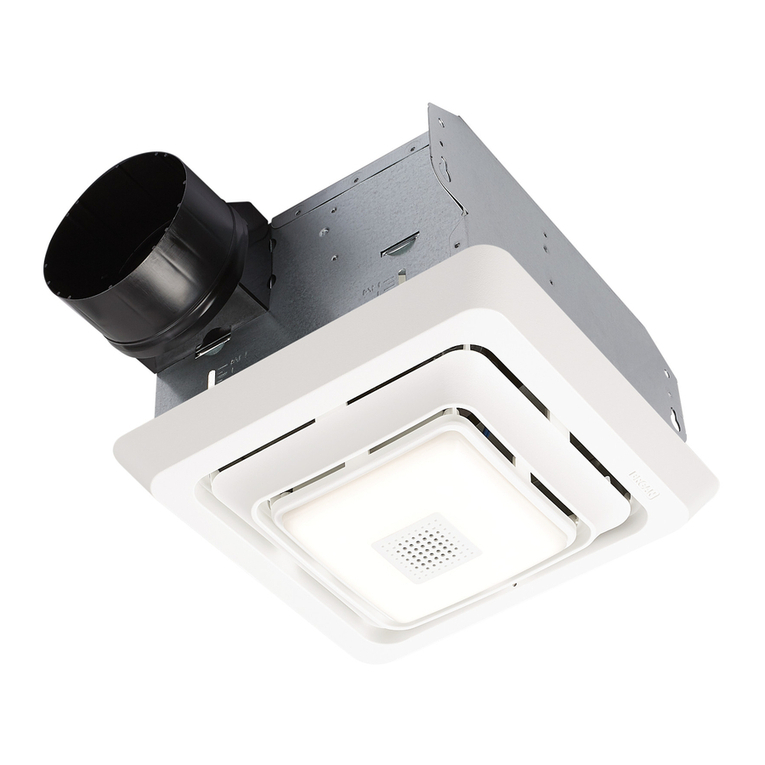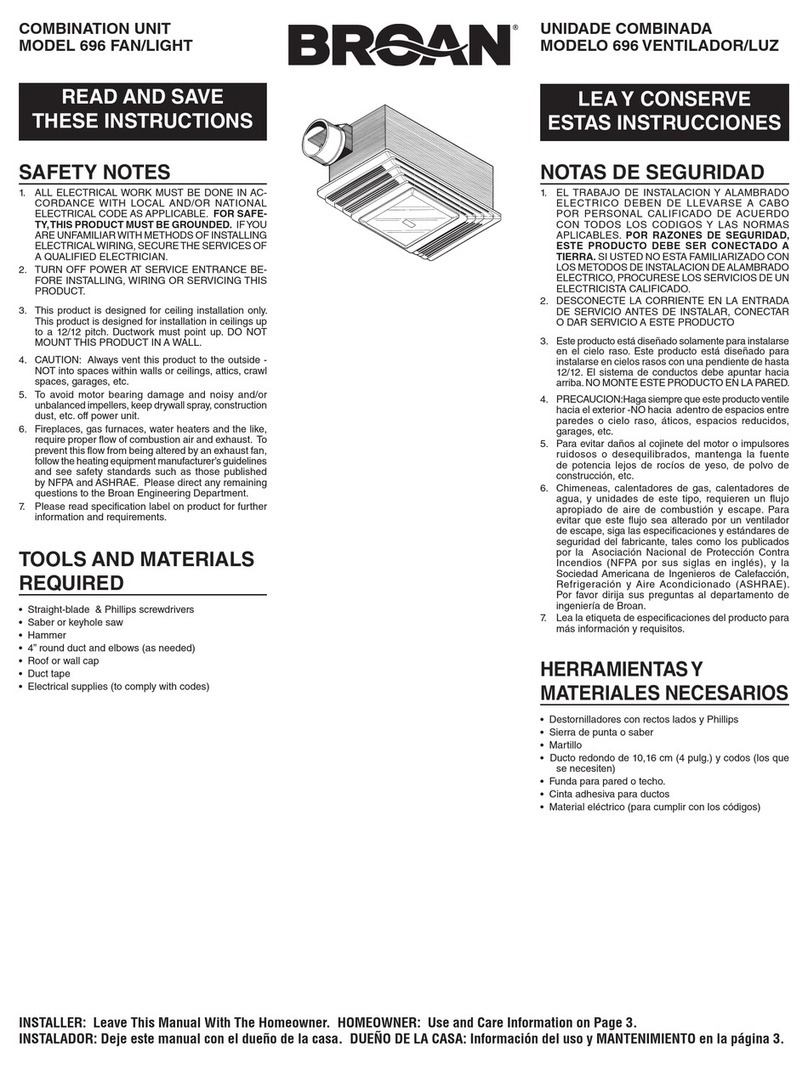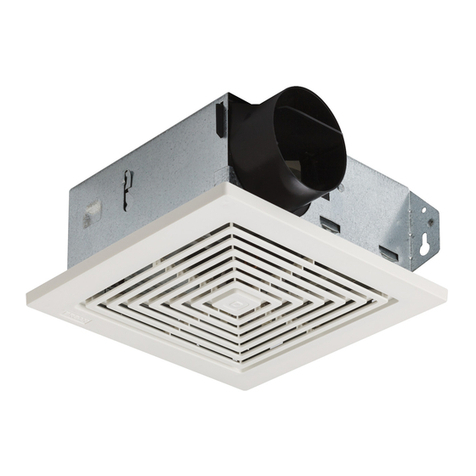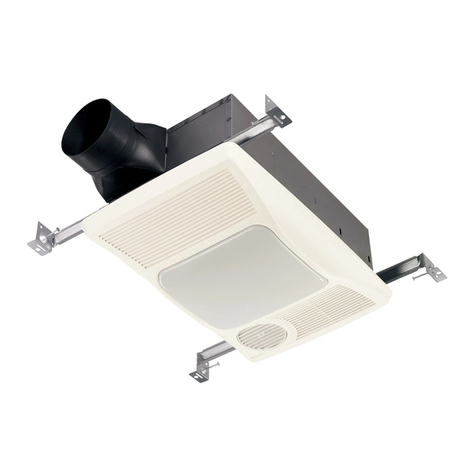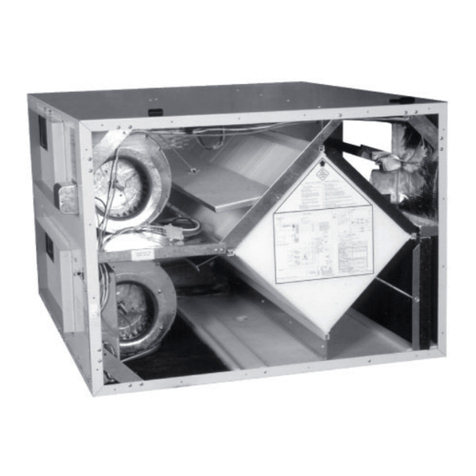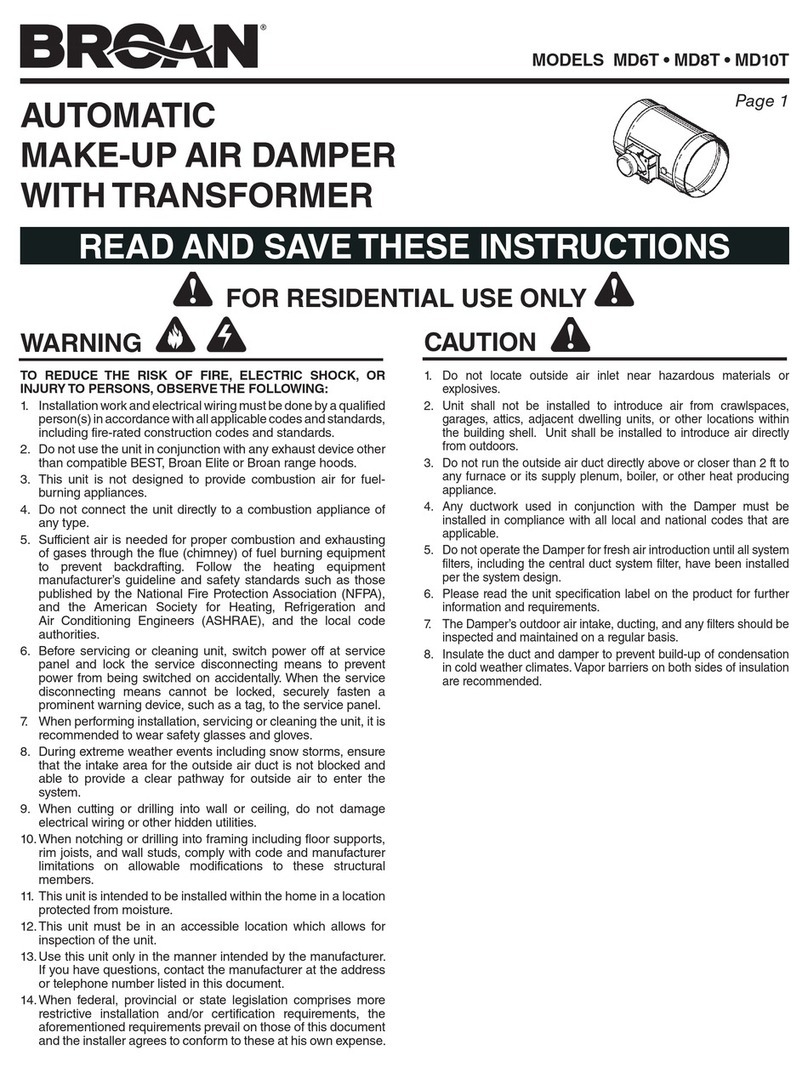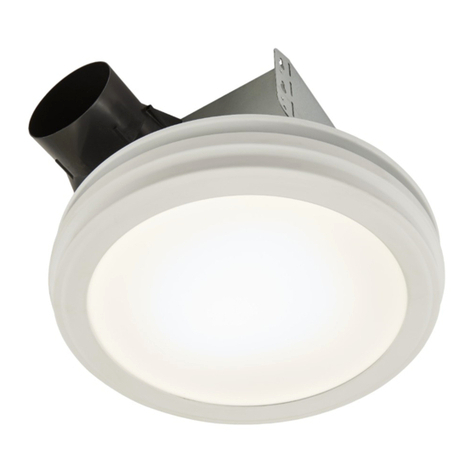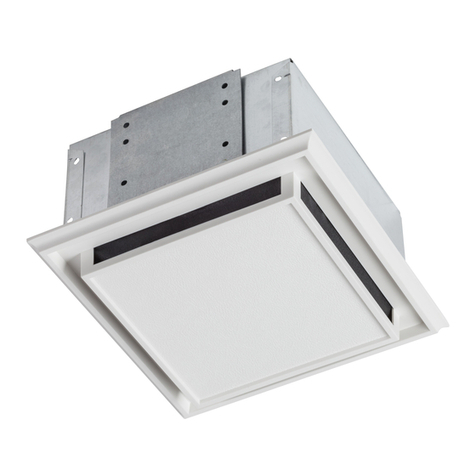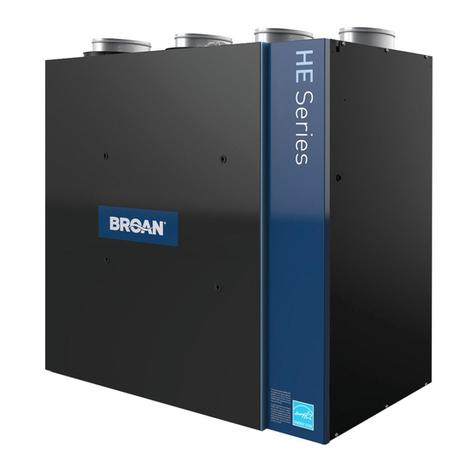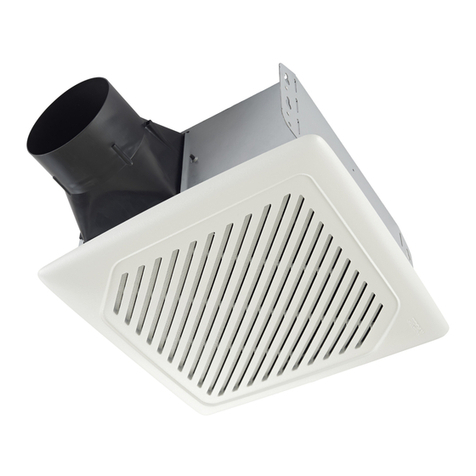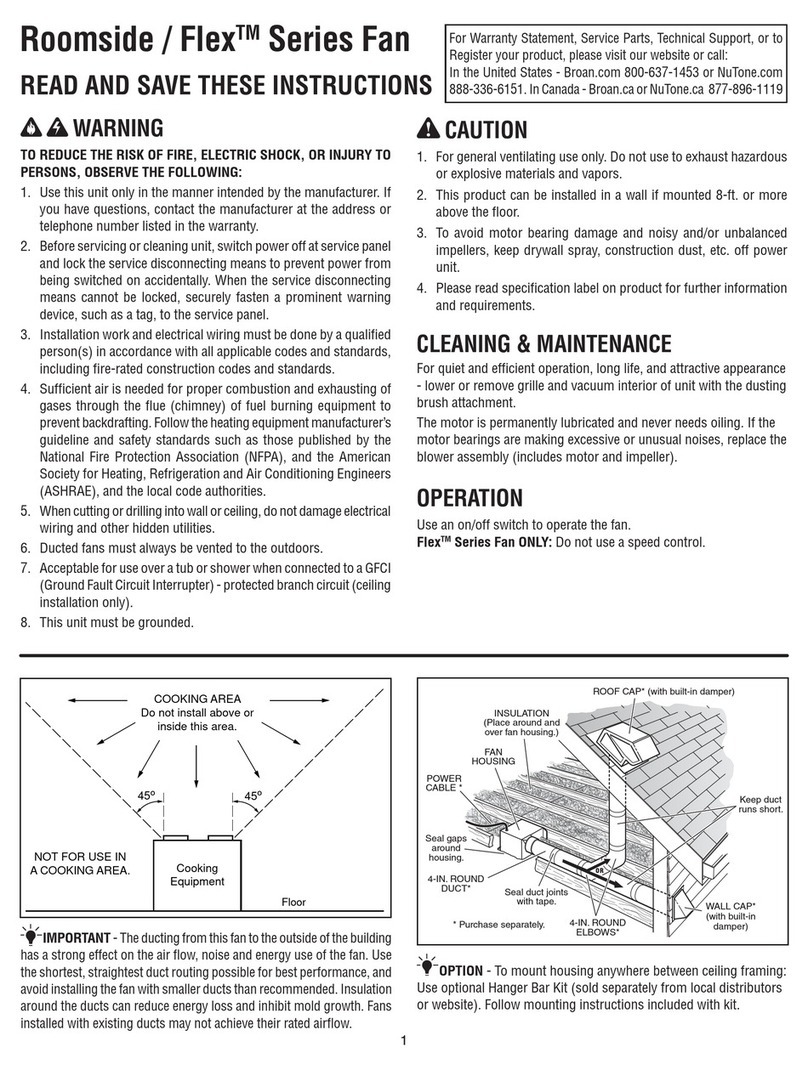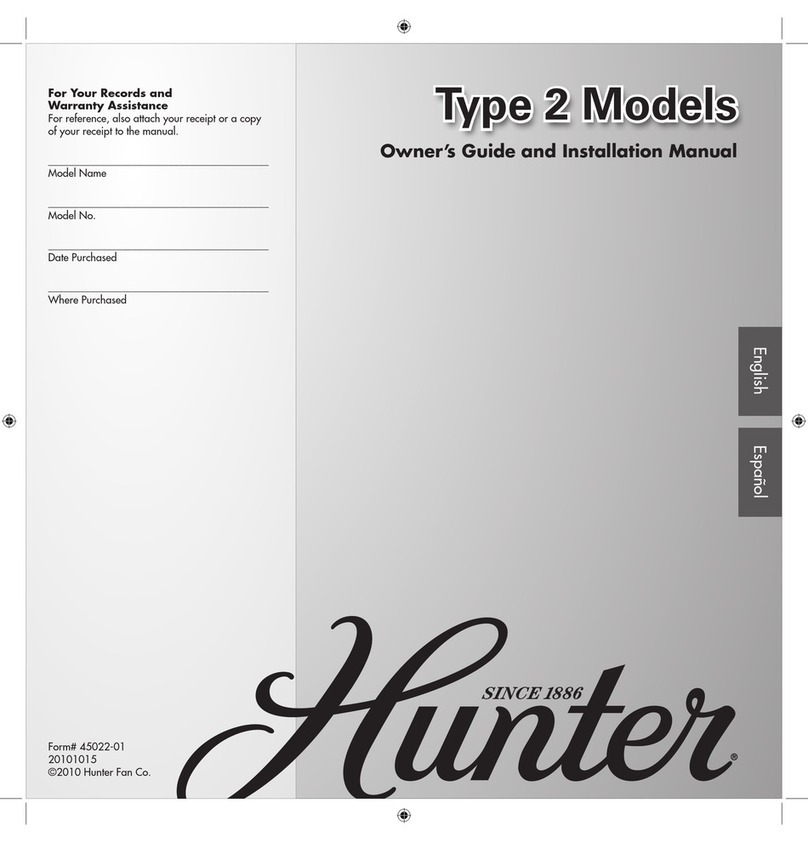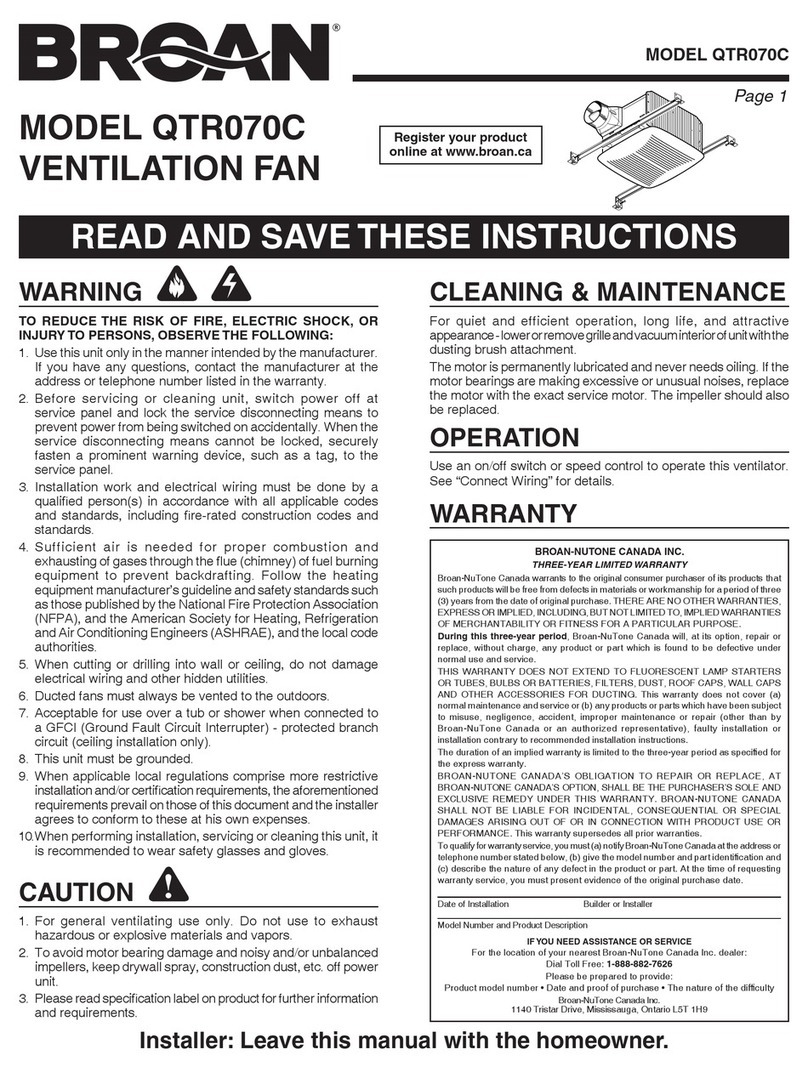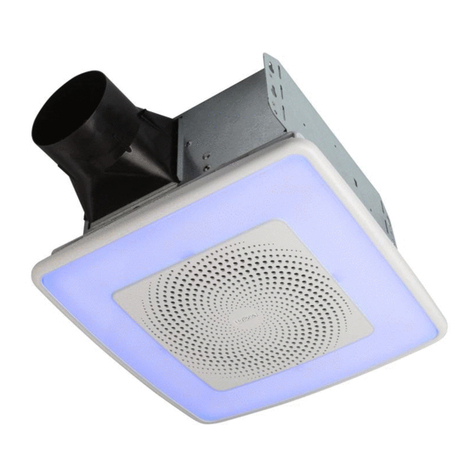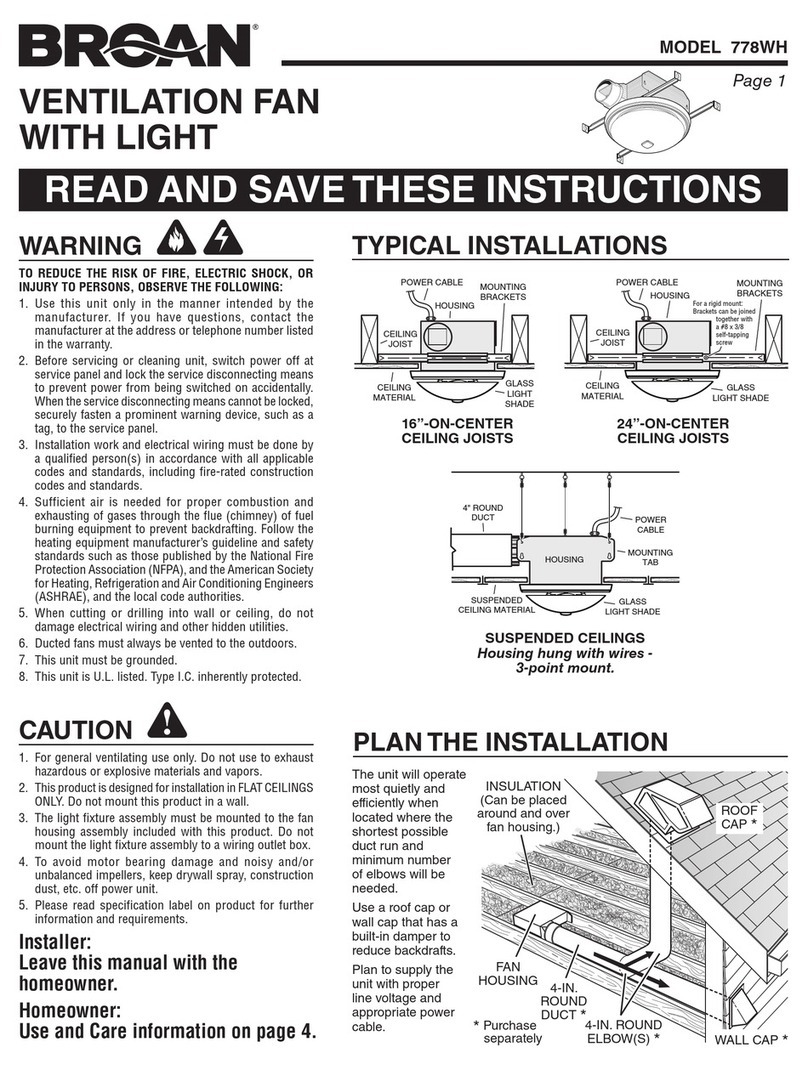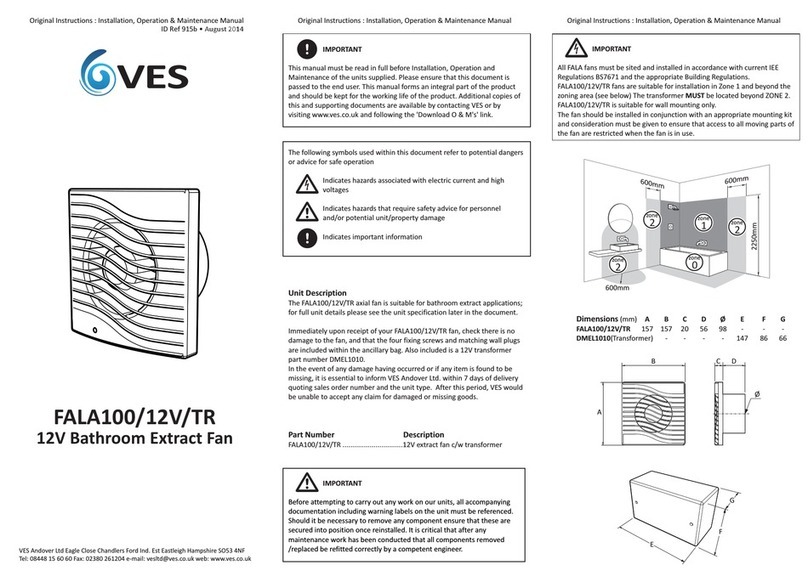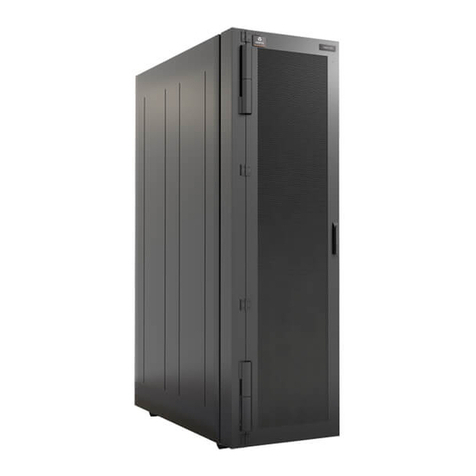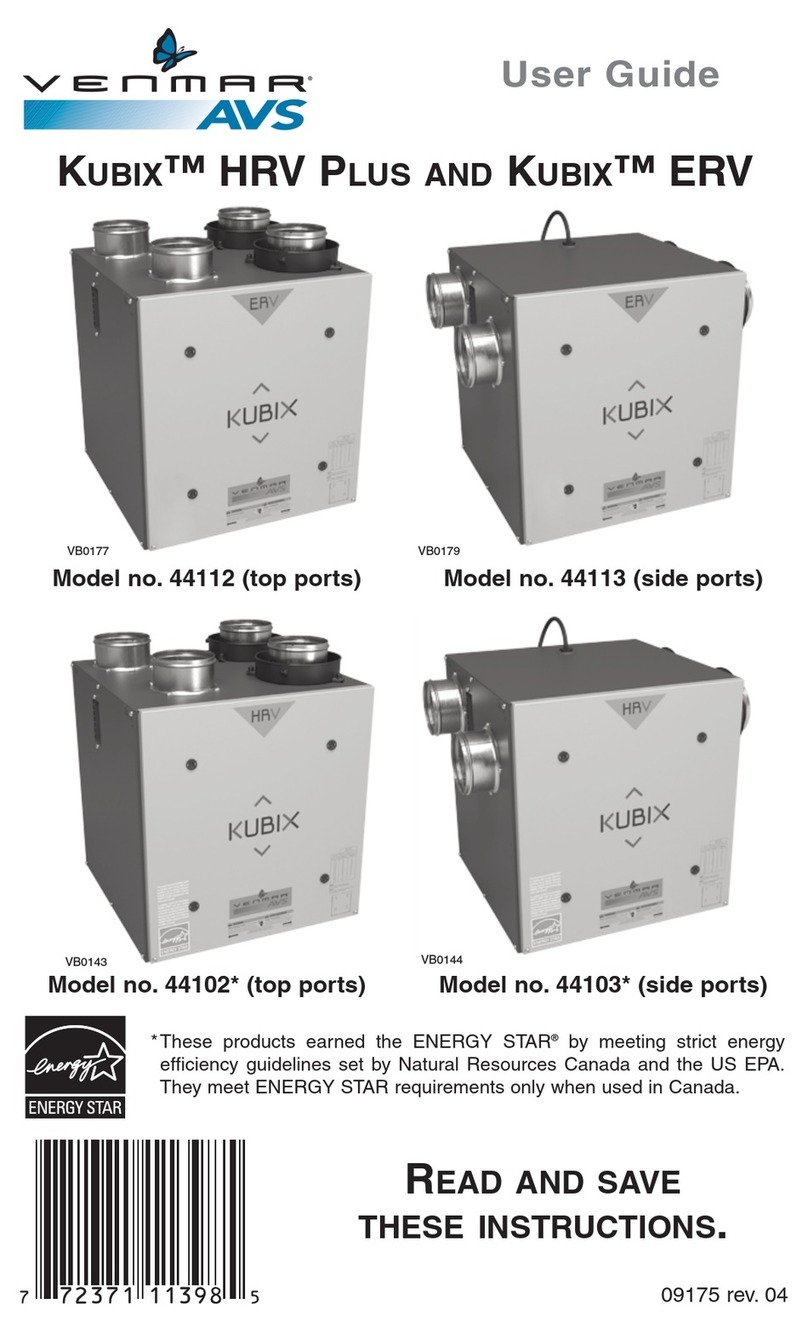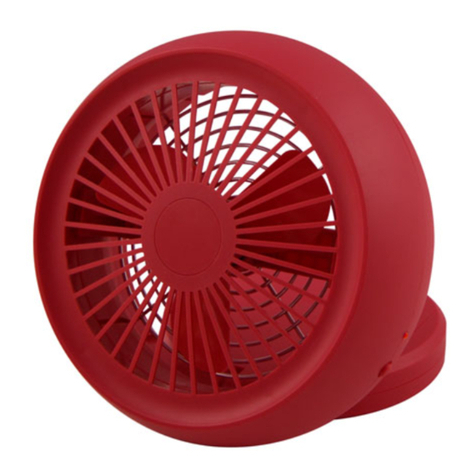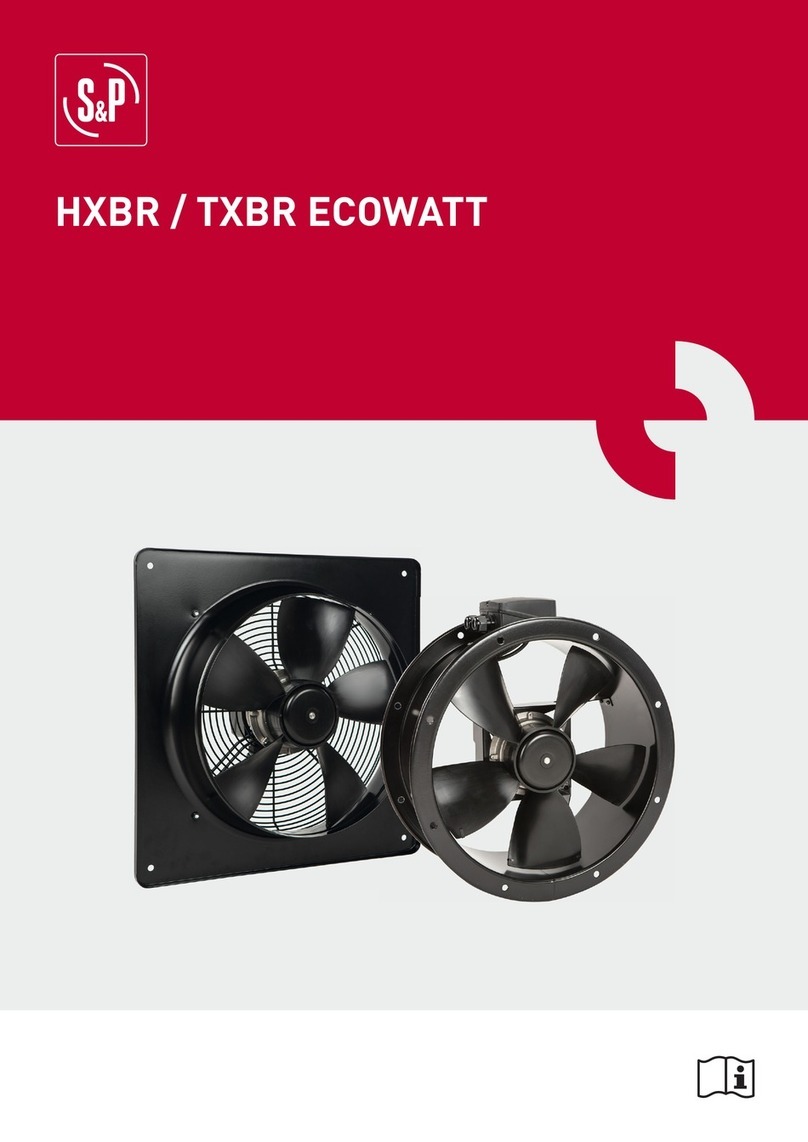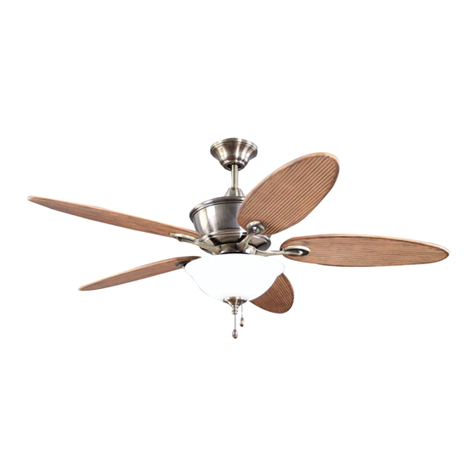
Downdraft Ventilators
Page 1
WARNING
READ AND SAVE THESE INSTRUCTIONS
WARNING
TO REDUCE THE RISK OF FIRE, ELECTRIC SHOCK, OR INJURYTO
PERSONS, OBSERVE THE FOLLOWING:
1. Use this unit only in the manner intended by the manufacturer. If you
have questions, contact the manufacturer at the address or telephone
number in the warranty.
2. Before servicing or cleaning unit, switch power off at service panel
and lock the service disconnecting means to prevent power from be-
ing switched on accidentally. When the service disconnecting means
cannot be locked, securely fasten a prominent warning device, such
as a tag, to the service panel.
3. Installation work and electrical wiring must be done by a qualified
person(s) in accordance with all applicable codes and standards,
including fire-rated construction codes and standards.
4. Sufficient air is needed for proper combustion and exhausting of
gases through the flue (chimney) of fuel burning equipment to prevent
backdrafting. Follow the heating equipment manufacturer’s guideline
and safety standards such as those published by the National Fire
ProtectionAssociation (NFPA), and theAmerican Society for Heating,
RefrigerationandAirConditioningEngineers(ASHRAE),and the local
code authorities.
5. When cutting or drilling into wall or ceiling, do not damage electrical
wiring and other hidden utilities.
6. Ducted fans must always be vented to the outdoors.
7. To reduce the risk of fire, use only metal ductwork.
8. Do not install this product with the activating switch directly behind
a burner or element. Minimum distance between the switch and the
edge of the burner should be 4 inches.
9. Loose-fittingor hanging clothing should neverbe worn whenoperating
this appliance.They may be ignited by burners/elements on cooktop.
10. Children should not be left alone or unattended in the area where this
appliance is in use.
11. This unit must be grounded.
TO REDUCE THE RISK OF A RANGE TOP GREASE FIRE:
a) Never leave surface units unattended at high settings.
Boilovers cause smoking and greasy spillovers that may
ignite. Heat oils slowly on low or medium settings.
b) Always turn hood ON when cooking at high heat or when
cooking flaming foods.
c) Clean ventilating fans frequently. Grease should not be
allowed to accumulate on fan or filter.
d) Use proper pan size. Always use cookware appropriate
for the size of the surface element.
TO REDUCE THE RISK OF INJURY TO PERSONS IN THE EVENT OF
A RANGE TOP GREASE FIRE, OBSERVE THE FOLLOWINGa:
1. SMOTHER FLAMES with a close-fitting lid, cookie sheet,
or metal tray, then turn off the burner. BE CAREFUL TO
PREVENT BURNS. If the flames do not go out immedi
ately, EVACUATE AND CALL THE FIRE DEPARTMENT.
2. NEVER PICK UP A FLAMING PAN - You may be burned.
3. DO NOT USE WATER, including wet dishcloths or towels
- a violent steam explosion will result.
4. Use an extinguisher ONLY if:
A. You know you have a Class ABC extinguisher, and you
already know how to operate it.
B. The fire is small and contained in the area where it
started.
C. The fire department is being called.
D. You can fight the fire with your back to an exit.
aBased on “Kitchen Firesafety Tips” published by NFPA.
MODEL WIDTH BLOWER
RMDD3004 30" 500 cfm Internal
RMDD3604 36" 500 cfm Internal
RMDD4804 48" 500 cfm Internal
RMDD3004EX 30" Models 331H, 332H, 335, 336 HLB3, HLB6, HLB9, and HLB11 External (purchase separately)
RMDD3604EX 36" Models 331H, 332H, 335, 336 HLB3, HLB6, HLB9, and HLB11 External (purchase separately)
RMDD4804EX 48" Models 331H, 332H, 335, 336 HLB3, HLB6, HLB9, and HLB11 External (purchase separately)
WARNING - To reduce the risk of burns or ignition of clothing by reaching across burners, the downdraft remote control MUST
be mounted in the countertop - at least 4" from the burners. See "INSTALL COOKTOP" section on page 8.
INSTALLER:
Save this manual for Electrical
Inspector and Homeowner to use.
NOTE: Model RMDDRBK Remote Up/Down
Control sold separately.
CAUTION
1. For indoor use only.
2. For general ventilating use only. Do not use to exhaust hazardous or
explosive materials and vapors.
3. To avoid motor bearing damage and noisy and/or unbalanced impel-
lers, keep drywall spray, construction dust, etc. off power unit.
4. Clean filters and grease-laden surfaces frequently.
5. Do not repair or replace any part of this appliance unless specifically
recommended in this manual. All other servicing should be done by
a qualified technician.
6. Please read specification label on product for further information and
requirements.
7. To reduce the risk of fire and electric shock, install this downdraft only
with Rangemaster blower models shown below. Other blowers cannot
be substituted. (blowers sold separately).
MODEL WIDTH BLOWER
RMDD3004 30" 500 cfm Internal
RMDD3604 36" 500 cfm Internal
RMDD4804 48" 500 cfm Internal
RMDD3004EX 30" External, Model 331H, 332H, 335, 336,
HLB3, HLB6, HLB9, y HLB11 (purchase
separately)
RMDD3604EX 36" External, Model 331H, 332H, 335, 336,
HLB3, HLB6, HLB9, y HLB11 (purchase
separately)
RMDD4804EX 48" External, Model 331H, 332H, 335, 336,
HLB3, HLB6, HLB9, y HLB11 (purchase
separately)
Register your product online at: www.broan.com/register
